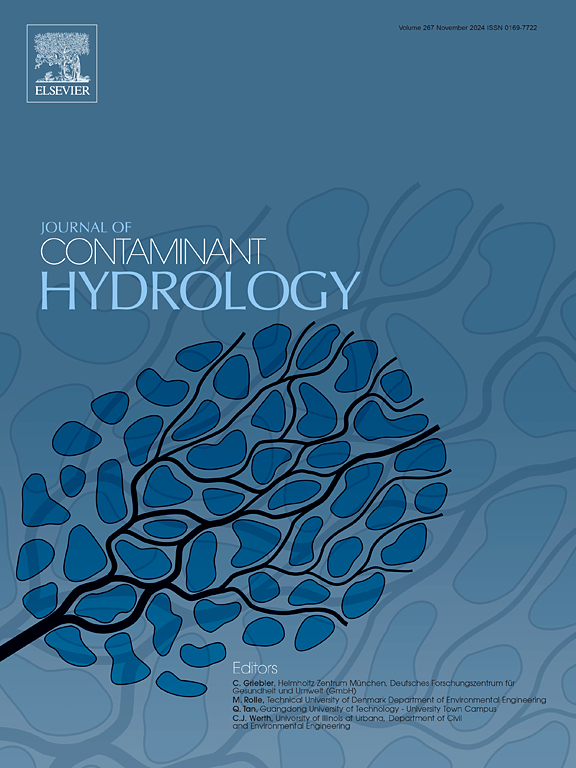The nexus of microplastics, food and antimicrobial resistance in the context of aquatic environment: Interdisciplinary linkages of pathways
IF 3.5
3区 环境科学与生态学
Q2 ENVIRONMENTAL SCIENCES
引用次数: 0
Abstract
The exponential rise in plastic production since the mid-20th century has led to the widespread existence of microplastics in various ecosystems, posing significant environmental and health concerns. Microplastics, defined as plastic particles smaller than 5 mm, have infiltrated diverse environments, including oceans, freshwater bodies, and even remote Arctic ice. Their ability to absorb toxic chemicals and serve as vectors for microbial colonization raises concerns about their impacts on aquatic organisms and human health. This review examines the pathways by which microplastics infiltrate the food chain, highlighting their presence in various food items consumed by humans. Furthermore, it explores the nexus between microplastics and antimicrobial resistance (AMR), elucidating how microorganisms inhabiting plastic surfaces facilitate the transmission of antibiotic resistance genes (ARGs). The review underscores the urgent need for interdisciplinary research integrating environmental science, microbiology, public health, and policy to address the multifaceted challenges posed by microplastics. Standardized protocols for sampling and analysis are essential to enable meaningful comparisons across research and regions. By collectively addressing these challenges, we can strive towards a more sustainable and resilient future for ecosystems and human societies.

水生环境中微塑料、食品和抗菌素耐药性的关系:途径的跨学科联系
自20世纪中叶以来,塑料产量呈指数级增长,导致微塑料在各种生态系统中广泛存在,造成了严重的环境和健康问题。微塑料被定义为小于5毫米的塑料颗粒,已经渗透到各种环境中,包括海洋、淡水水体,甚至是遥远的北极冰。它们吸收有毒化学物质和作为微生物定植媒介的能力引起人们对它们对水生生物和人类健康的影响的关注。这篇综述研究了微塑料渗入食物链的途径,强调了它们在人类消费的各种食品中的存在。此外,它还探讨了微塑料与抗菌素耐药性(AMR)之间的关系,阐明了栖息在塑料表面的微生物如何促进抗生素抗性基因(ARGs)的传播。该综述强调,迫切需要进行跨学科研究,将环境科学、微生物学、公共卫生和政策结合起来,以应对微塑料带来的多方面挑战。标准化的采样和分析方案对于实现跨研究和区域的有意义比较至关重要。通过共同应对这些挑战,我们可以努力为生态系统和人类社会创造一个更可持续、更有韧性的未来。
本文章由计算机程序翻译,如有差异,请以英文原文为准。
求助全文
约1分钟内获得全文
求助全文
来源期刊

Journal of contaminant hydrology
环境科学-地球科学综合
CiteScore
6.80
自引率
2.80%
发文量
129
审稿时长
68 days
期刊介绍:
The Journal of Contaminant Hydrology is an international journal publishing scientific articles pertaining to the contamination of subsurface water resources. Emphasis is placed on investigations of the physical, chemical, and biological processes influencing the behavior and fate of organic and inorganic contaminants in the unsaturated (vadose) and saturated (groundwater) zones, as well as at groundwater-surface water interfaces. The ecological impacts of contaminants transported both from and to aquifers are of interest. Articles on contamination of surface water only, without a link to groundwater, are out of the scope. Broad latitude is allowed in identifying contaminants of interest, and include legacy and emerging pollutants, nutrients, nanoparticles, pathogenic microorganisms (e.g., bacteria, viruses, protozoa), microplastics, and various constituents associated with energy production (e.g., methane, carbon dioxide, hydrogen sulfide).
The journal''s scope embraces a wide range of topics including: experimental investigations of contaminant sorption, diffusion, transformation, volatilization and transport in the surface and subsurface; characterization of soil and aquifer properties only as they influence contaminant behavior; development and testing of mathematical models of contaminant behaviour; innovative techniques for restoration of contaminated sites; development of new tools or techniques for monitoring the extent of soil and groundwater contamination; transformation of contaminants in the hyporheic zone; effects of contaminants traversing the hyporheic zone on surface water and groundwater ecosystems; subsurface carbon sequestration and/or turnover; and migration of fluids associated with energy production into groundwater.
 求助内容:
求助内容: 应助结果提醒方式:
应助结果提醒方式:


